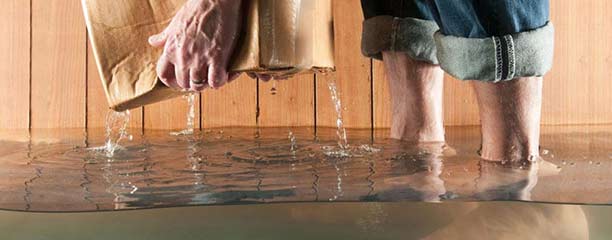
Sump pumps are essential in every home, says Sun-Pro Realty and Management, especially around neighborhoods with high groundwater. Sump pumps are electrically operated pumps that reside in the sump pit. According to their design, they stay submerged in water.
The sump pump helps to prevent your home from water damage. If water flows into the sump pump for any reason, it activates to bring water out of your home when it reaches a certain level. However, some older pumps that require manual operation still exist.
The most common reason people have sump pumps in their homes is to expel groundwater regularly. It may not activate for years if you reside in areas with lower groundwater. As groundwater enters the house, it drains into the sump pit, and the pump ejects it to the home’s exterior. Another benefit of a sump pump is to remove water from the house in case of flooding.
Sump pumps can expel large quantities of water during flooding. If you have a higher quality sump pump, they can help remove about 4000 to 5000 gallons of water per hour discharge flow. Depending on the area, issues of floods may not be rampant. However, it is best to guard against it.
Another job of a sump pump is to keep your basement dry. Because of the crucial benefits of a sump pump, it is essential to maintain it in top condition. Failure to do so could lead to a flooded basement and the consequence of water damage.
How often should you maintain your sump pumps?
The frequency of sump pump maintenance should be at least once every year. However, you may need to perform it quarterly if your home is in an area that experiences more snow, rainfall, or higher groundwater levels. In such areas, your sump pump will work harder. According to the Sump Pump and Sewage Pump Manufacturers Association (SSPMA), the following schedules are advisable:
Annually
- Remove the sump pump.
- Clean the sump pit and pump.
- Get professionals to inspect your pump annually.
Quarterly
- Clean the pump’s screen and inlet every 3 – 4 months if the sump pump does not expel water from the washing machine.
Monthly
- Unplug and clean the sump pump monthly if it disposes of water from the washing machine.
- Clean the screen and inlet.
- Ensure you plug back the pump after cleaning.
Tips on cleaning your sump pump
Unplug the sump pump
The first step before cleaning your sump pump is to unplug it from the power supply. Doing this is a safety precaution to prevent hazards.
Clean the sump basin
Large or loose debris will likely collect inside the basin. We advise that you remove it before attempting to take the sump pump out by the pit. Doing so will make it easy to remove the pump.
Remove and inspect the pump
You can not clean the pump properly while it is still inside the pit. For this reason, you need to take it out.
- Loosen and disconnect the discharge pipe so you can remove the sump pump. If it’s difficult to detach the discharge pipe, it could mean mold is growing on that site. You can use a lubricant such as WD-40 to loosen it. If it is still stuck, try using bleach or vinegar. It is essential to note that you should never use both at once.
- Take the pump outdoors after disconnecting it. Doing so will prevent you from messing up the basement. If your sump pump is external, move to the next level.
- Wipe the sump pump with a damp cloth to remove grime.
- Use a garden hose to spray the pump if it has a lot of build-up.
- Inspect the sump pump for signs of corrosion after cleaning it.
Don’t hesitate to call a local sump pump specialist for a second opinion if you notice anything unusual.
Clean the sump pump inlet’s screen
The sump pump inlet’s screen is a filter that prevents debris from penetrating inside the pump to cause damage. You can locate it under the base of the sump pump. Use a scrub brush to clean and remove debris or build-up on the screen.
Inspect the sump pump discharge system
Check the outside discharge pipe and surrounding to ensure that water from the sump pump discharges properly. It should direct water at least 20 feet from the property. Doing so will help prevent foundation issues.
Test your sump pump
- Put back your sump pump into the pit.
- Reconnect the discharge pipes and power supply.
- Pour at least 5 gallons of water into the sump pit and observe.
Your pump should start pumping water out of the basin if it works properly.
The bottom line
It is recommended that you invite a local plumber to inspect your sump pump annually. A plumbing technician will assess the pit, check valve, backup power source, alarm, discharge location, and removable cover.
